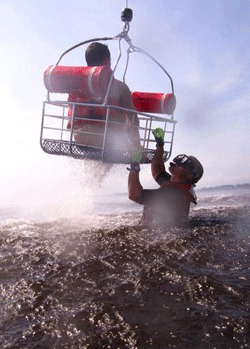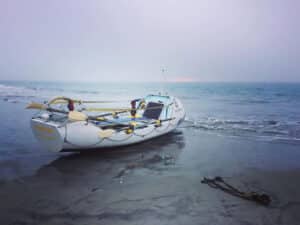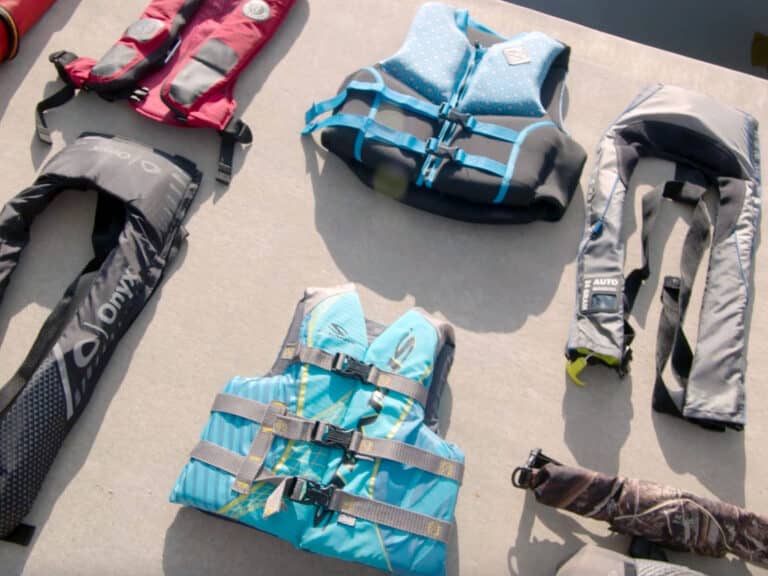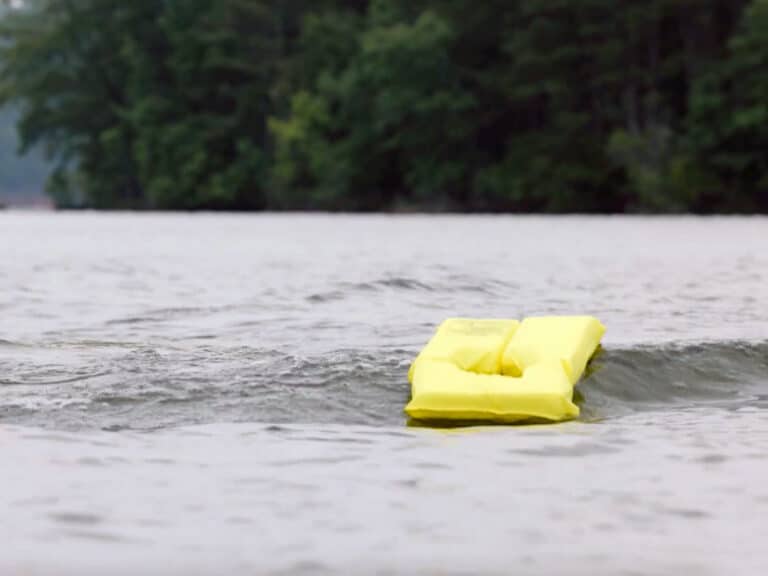
The Ride of Your Life: Preparing for a Helicopter Hoist
A helicopter hoist from a vessel is a time-critical and risky operation. Knowing what to do before the helicopter arrives—and after the rescue begins—can help lower the risk for all involved.
Listen Up
The helicopter will be calling on VHF regardless of how it received a distress alert. Monitor channel 16, and be prepared to send and receive vital information. If your radio is down, a handheld may be lowered to establish communications.
Clear the Deck
U.S. Coast Guard helicopters create hurricane-force winds. Clear the deck of anything that isn’t part of your vessel. Lower and secure outriggers, antennas, flagpoles and anything else that might get in the way of something being lowered to your boat.
Do What You are Told
A rescue swimmer is typically lowered first to manage the rescue. These experienced professionals consider the fuel state of the helicopter, sea conditions, winds, and a dozen other variables with almost no margin for error. If they need your help, they will ask. Otherwise, do exactly as they say.
Look, but Don’t Touch
Don’t touch anything that hasn’t touched your boat first. Static electricity can build up on whatever is attached to the cable being lowered from the helicopter. That includes the rescue swimmer. The resulting shock to you can range from mildly uncomfortable to completely debilitating.
You Can’t Take It with You
Rescue crews are willing to risk their lives to save you, but they aren’t willing to risk anything to save luggage. Think small when deciding which items you must save. Small briefcases or bags are fine, but if it won’t fit between your legs in the rescue basket, then it’s probably not coming with you.
It May Be Safer in the Water
Jumping into the open ocean is dangerous, but being caught on a foundering boat is worse. The rescue crew will make the call and let you know what to do. If you find the swimmer next to your boat and motioning for you to jump, then trust him. He’s there to help.
Wear Your Life Jacket—and Have These Items in Its Pockets
After 15 years in the search and rescue business, my personal life jacket reflects lessons learned the hard way. Tied into pockets or otherwise attached to my Type III PFD are the following items:
- A U.S. Coast Guard-approved strobe light with hook tape glued on the back and fresh batteries inside.
- A small, waterproof flashlight (in case the strobe light fails).
- Two chemical light sticks (in case the flashlight fails).
- A glass signal mirror for daytime use. The plastic kind are cheaper and easier to find, but they don’t last as long and aren’t always as bright.
- A small Rescue Streamer. Nothing natural at sea looks like a long, straight line. This floating, brightly colored swath of plastic makes an excellent passive signal. You deploy it and forget about it.
- A personal 406 EPIRB. If I go overboard on the night watch, I’ll call for my own rescue, thanks. It also has hook tape glued on the back.
In the cargo pocket of my pants, I carry an insulated hood or skull cap complete with reflective tape and two squares of pile tape, one each for the strobe and EPIRB. The light is then visible from every angle, and the EPIRB signal remains strong. (It can be severely dampened if the antennas are even slightly submerged.)
Though I don’t wear my life jacket all the time when under way, I don it anytime I’m alone on deck, in bad weather and as step one in any at-sea emergency.
* * * * *
The U.S. Coast Guard is asking all boat owners and operators to help reduce fatalities, injuries, property damage, and associated healthcare costs related to recreational boating accidents by taking personal responsibility for their own safety and the safety of their passengers. Essential steps include: wearing a life jacket at all times and requiring passengers to do the same; never boating under the influence (BUI); successfully completing a boating safety course; and getting a Vessel Safety Check (VSC) annually from local U.S. Coast Guard Auxiliary, United States Power Squadrons(r), or your state boating agency’s Vessel Examiners. The U.S. Coast Guard reminds all boaters to “Boat Responsibly!” For more tips on boating safety, visit www.uscgboating.org.








